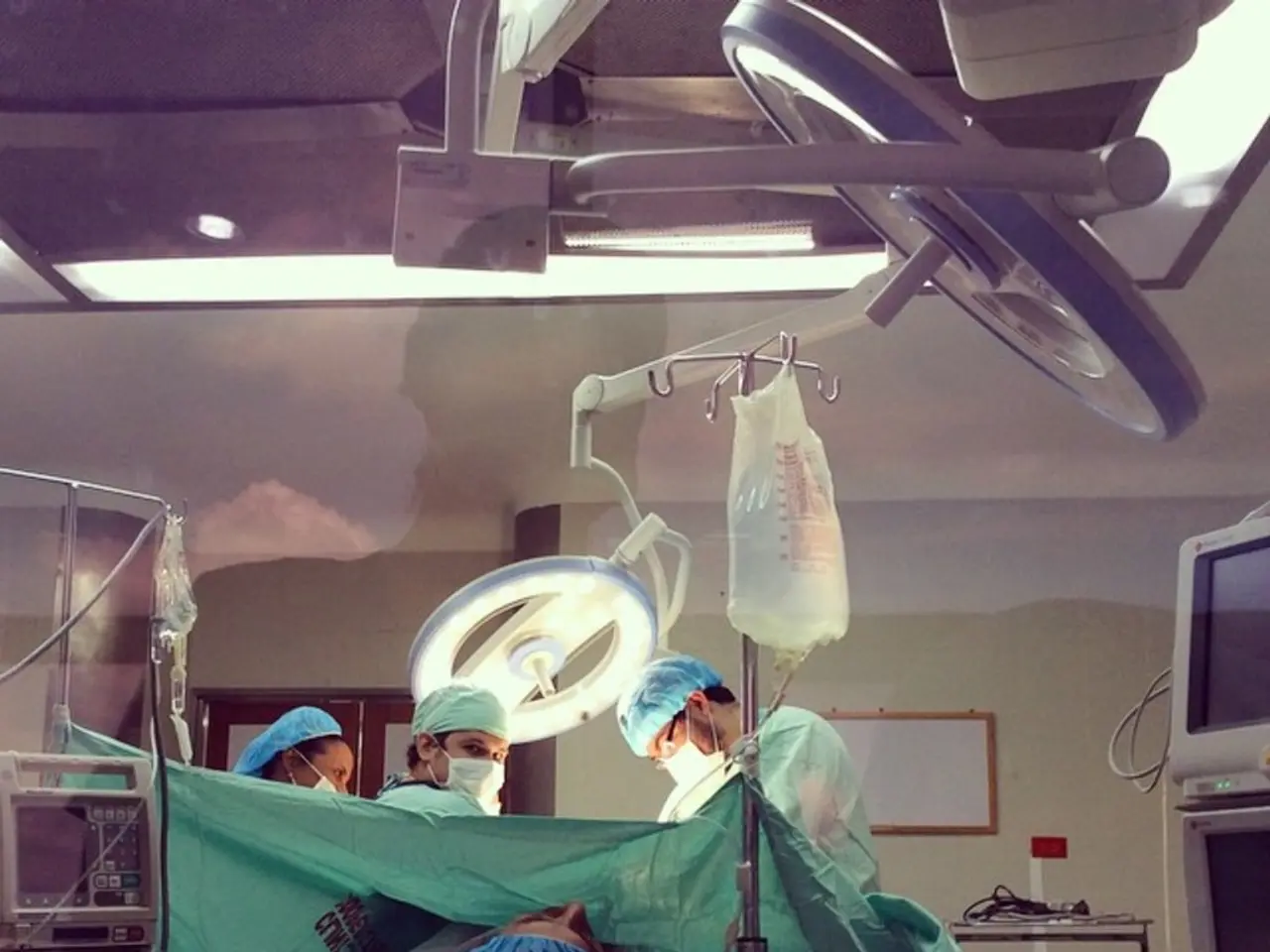Expanded deployment of robotic technology in NHS, set to positively impact millions of patients
The National Health Service (NHS) in England is set to significantly increase the use of robotic surgery, with a goal of performing half a million operations annually by 2035. This ambitious target, announced by Sir Jim Mackey, NHS chief executive, aims to return to shorter elective waiting times by 2029.
The expansion of robotic surgery is driven by a combination of national ambition, regulatory frameworks, training standards, and technology assessment. The NHS sees robotic-assisted surgery as a transformative innovation, capable of reducing waiting times, enhancing patient outcomes, and supporting professional development for surgeons.
Currently, systems like the da Vinci Xi are already in use across England, particularly in specialties like urology and gynecology. The NHS expects to see increasing numbers of emergency operations using robotics, which can be more precise than the human hand. In fact, nine out of ten of all keyhole surgeries are projected to be delivered with robot assistance within the next 10 years, up from one in five today.
The National Institute for Health and Care Excellence (NICE) plays a crucial role in approving the use of specific robotic systems and procedures within the NHS. Five soft tissue procedure systems and six orthopaedic surgery systems are currently undergoing evaluation or have received conditional approval from NICE.
The integration of robotic surgery in the NHS is governed by national and international regulatory standards, ensuring patient safety and outcomes. Robotic procedures and devices must comply with these standards, adhere to NHS and NICE guidelines, and be subject to robust local and national governance structures.
Professional bodies advocate for structured training frameworks at basic, advanced, and trainer levels to ensure that surgeons are competent and patient outcomes are optimized. Collaboration with surgical Royal Colleges is emphasized to standardize robotic training nationally.
The NHS is committed to addressing inequalities in access to robotic surgery across regions and the impact on surgical trainees as the technology becomes more widespread. Balancing rapid adoption with evidence-based integration is key to the NHS's approach.
Chris Whitehouse, a political consultant and expert on medical technology policy and regulation, emphasizes the potential of robotic surgery to revolutionize healthcare. As the chair of the Urology Trade Association and governor of the Anscombe Bioethics Centre, Whitehouse advises MedTech suppliers and is a strong advocate for the role of robotic surgery in improving patient outcomes and NHS efficiency.
In conclusion, the national guidance for robotic surgery in NHS England emphasizes rapid but evidence-based expansion, robust regulatory oversight, structured training pathways, and equitable access. The approach is patient-centered, aiming to integrate robotic technology safely and effectively to improve outcomes and NHS efficiency, while ensuring clear governance and professional accountability. Millions of patients are expected to benefit from NHS robotic surgery over the next decade, with robotic surgery becoming the default for many operations.
- The expansion of robotic surgery within the National Health Service (NHS) in England is being driven by a combination of factors, such as national ambition, regulatory frameworks, and technology advancements, with the aim of revolutionizing health-and-wellness outcomes for medical-conditions treatments.
- In the next decade, it is projected that nine out of ten keyhole surgeries will be delivered with robot assistance, transforming the way health care is provided, supported by robust training standards, national and international regulatory oversight, and equitable access to robotic surgery across regions.




